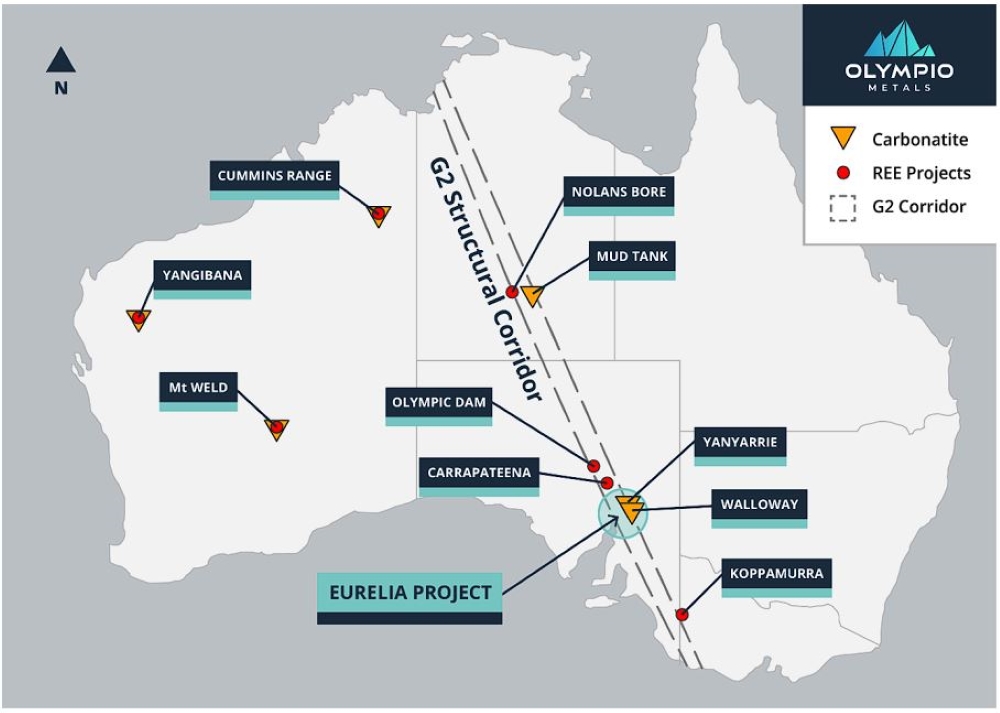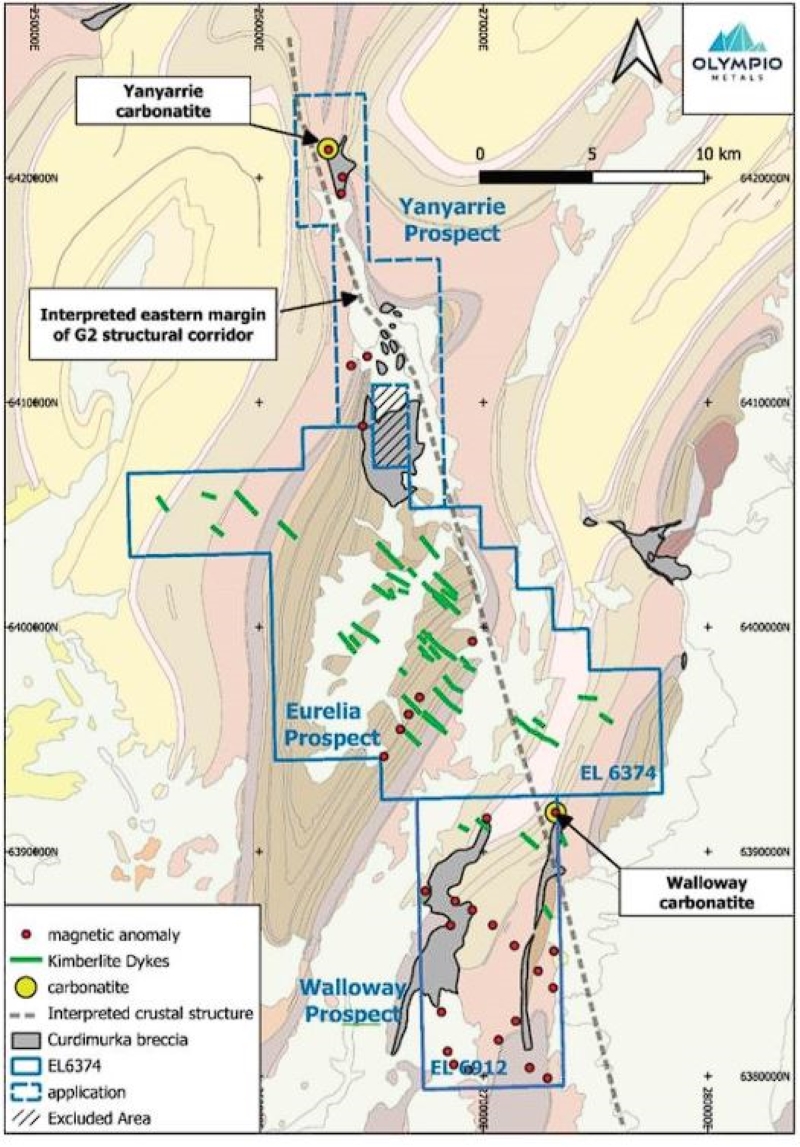Could Olympio repeat the success of other rare earths projects along the G2 corridor?

A drone-based magnetic survey is unlocking further potential targets ahead of drilling at Walloway prospect. Pic via Getty Images.
- A drone magnetic survey has commenced at the Walloway prospect in South Australia
- Highly prospective for carbonatite intrusives
- RC drilling is planned for October
Drone surveys will identify targets ahead of a planned RC drilling campaign at the Walloway prospect, part of Olympio Metals’ Eurelia rare earths project in South Australia.
Olympio Metals’ (ASX:OLY) Eurelia asset is contained along the G2 structural corridor which cuts a north-south right through Australia and hosts the pending REE mining operations of Nolans and Koppamurra. It also hosts the major REE-hosting deposits Olympic Dam and Carrapateena, which have long been recognised as associated with the G2 corridor.
OLY believes Eurelia is in the right location on this crustal scale structure, which plumbs deep into the earth’s mantle, for a similar discovery.

A new drone-based aeromagnetic survey will provide detailed data to allow modelling of magnetic carbonatite targets at its highly prospective Walloway prospect to the south, spanning 90km2 to cover the portion of tenement EL 6912 that has had no prior testing.
Carbonatites and Alkaline Igneous rock types
The Eurelia project area contains numerous intrusions of alkaline igneous rocks, including carbonatites, which are recognised worldwide as hosts of economic rare earths mineralisation. These intrusive complexes often occur as plugs, dykes, sills, breccias or veins.
Carbonatites and alkaline intrusive rock types are often mineralised with REEs such as niobium, phosphorus, tantalum, uranium, thorium, copper, iron, titanium, vanadium, barium, fluorine and zirconium.
Olympio is the first explorer to recognise the REE potential of the carbonatites and alkaline igneous rocks at Eurelia, it says.
Olympio MD Sean Delaney says he’s excited about receiving the magnetic survey results and getting the drillbit spinning to follow up on the survey results.
“The Walloway carbonatite has been known about for over 50 years but has never been drilled. We have strong hints that there are more carbonatite intrusions at Walloway, and the current aeromagnetic survey should help confirm this. We can’t wait for the survey results, and look forward to drilling the targets that emerge and testing the rare earth potential ,” Delaney says.

October drilling
Gearing up for drilling, Olympio has submitted a work program application (EPEPR) to the South Australian Department for Energy and Mining, with approval expected imminently.
The EPEPR covers RC drilling across all priority magnetic carbonatite targets, including targets W1 and W3 within the Walloway prospect, with further targets expected to arise from the current survey, based on existing regional aeromagnetic data.
“The W1 and W3 targets have been generated from high-quality magnetic data from previous explorers and this detailed magnetic survey should confirm the prospectivity of numerous magnetic carbonatite targets that we have identified from the regional magnetic data,” Delaney says.
“We plan to follow up with RC drilling of priority targets as soon as possible.”
The explorer says further details will be provided upon completion of the current aeromagnetic survey and anomaly modelling, while contractors have already been engaged for drilling which is expected to commence in October.
Lithium exploration in Canada
While REE exploration at Eurelia continues to gather steam, so too does Olympio’s efforts to prove up lithium in the emerging Cadillac-Pontiac lithium camp in Quebec, Canada, where its newly-acquired Cadillac project is less than 100km from Canada’s only operating lithium mine.
Olympio acquired the 190km2 Cadillac project in early August not only because of the outcropping spodumene-bearing pegmatites at surface, but for the drilling results reported by previous explorer, Vision Lithium.
First-pass drilling completed by Vision returned grades up to 3.14% with spodumene crystals observed in core.
This shows the project has potential for bulk tonnage spodumene mineralisation, OLY MD Sean Delaney says.
“There are over 100 pegmatite dykes that have been identified in the field to date, and hundreds more pegmatites have been interpreted from a detailed LiDAR elevation model. OLY is just beginning to scratch the surface of this under-explored pegmatite-rich terrain,” Delaney says.
This article was developed in collaboration with Olympio Metals, a Stockhead advertiser at the time of publishing.
This article does not constitute financial product advice. You should consider obtaining independent advice before making any financial decisions.
Related Topics

UNLOCK INSIGHTS
Discover the untold stories of emerging ASX stocks.
Daily news and expert analysis, it's free to subscribe.
By proceeding, you confirm you understand that we handle personal information in accordance with our Privacy Policy.








